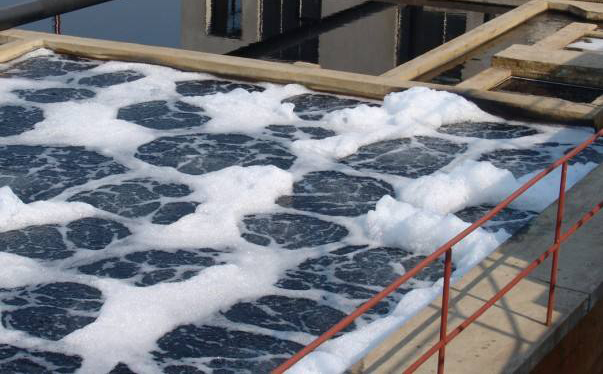The common forms of defoaming compounds found in wastewater, as well as their purposes, will be covered in detail in this article. We'll also address a few of the most common queries concerning these compounds.
Introduce
Modern life requires effective wastewater control. Impurities are treated and removed from the water throughout this procedure, making it safe to handle. Foam management, which can obstruct the treatment process, is one of the biggest problems in treating wastewater. Defoaming agents, sometimes referred to as wastewater defoamers, are used to prevent foam formation.
What common compounds found in wastewater defoam?
Chemical substances known as common wastewater defoamers are created to lessen and stop foam generation in wastewater treatment procedures. To reduce foaming, these substances are added to wastewater as surfactants.
In wastewater treatment, foam production is a frequent issue. Organic debris, detergents, and other pollutants in wastewater react with air or gas to generate foam when they come into contact. These bubbles have the potential to slow down processes, decrease efficiency, and potentially harm equipment.
Chemicals used in wastewater defoamers aid in preventing foam formation by releasing the foams' surface tension and inducing their collapse. The technique is accomplished by adding surfactants, which reduce the bubbles' surface tension and cause them to burst.

Chemicals used often to reduce foam in wastewater
In the process of treating wastewater, a variety of typical types of defoaming chemicals are employed. The wastewater type, the treatment method, and the pollutants in the water all have a role in the choice of chemicals that should be utilized.
1. A defoamer made of silicone
One of the most often used wastewater defoamers is silicone-based. They are incredibly good at managing foam since they are constructed of silicone oils and polymers. Silicone-based defoamers are utilized in many industrial applications and are renowned for their exceptional stability.
2. An oil-based defoamer
Another common form of wastewater defoamer is oil-based. They are made of mineral oil and are very good at regulating froth. In the pulp and paper sector, oil-based defoamers are frequently utilized.
3. A powder defoamer
Powdered defoamers are created from powdered surfactants and are very good at controlling foam. They are frequently utilized in sectors where liquid defoamers are impractical.
How do traditional defoamers in wastewater work?
Traditional defoamers in wastewater function by releasing the surface tension of the bubbles that develop. By acting as a surfactant, the chemical added to the water lowers the bubbles' surface tension.
The bubble bursts and the foam dissipates as the bubble's surface tension drops. The water's surface tension is decreased by the addition of surfactants, which aid in minimizing foam formation.
How are traditional defoaming agents used in wastewater?
The pulp and paper industry, the food processing sector, and wastewater treatment facilities all employ common chemicals to defoam wastewater. Prior to or during the foaming stage of the wastewater treatment process, chemicals are frequently applied.
The quantity of defoaming agent used is determined by the kind of wastewater being treated, the volume of foam produced, and the level of treatment required. To minimize overprocessing, which may be expensive and useless, chemicals are frequently applied in modest doses.
Chemicals used to defoam common wastewater are offered in liquid, powder, and emulsion form. The majority of defoamers are used in liquid form, which is put straight to wastewater. Defoamers that are powdered are dissolved in water and then added to the wastewater, whereas emulsions are mixed with water first and then added to the wastewater.
Advantages of traditional chemicals for defoaming wastewater
The use of traditional defoaming agents in wastewater has a variety of advantages, such as:
1. Boost performance
Conventional wastewater defoamers increase the effectiveness of the wastewater treatment process by reducing and avoiding foam formation. As a consequence, treatment periods are shortened and water consumption is decreased.
2. It is economical
A cost-effective method for managing foam in wastewater treatment operations is to use traditional defoaming chemicals. Chemicals are reasonably priced and can lower the expense of equipment repair and upkeep.
3. Enhance the water's quality
By ensuring that pollutants are successfully eliminated from the wastewater, the use of traditional defoaming chemicals in wastewater enhances the quality of the water. As a consequence, the water is cleaner and suitable for reuse or disposal.
4. Lessen the influence on the environment
The use of traditional defoaming chemicals in wastewater can assist lessen the environmental impact of wastewater by increasing the effectiveness of wastewater treatment procedures. This is particularly crucial for enterprises that release wastewater into rivers or other bodies of water.